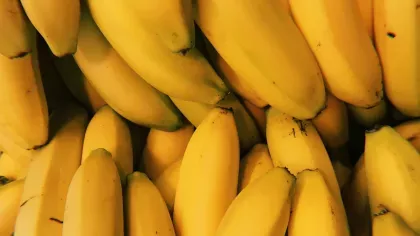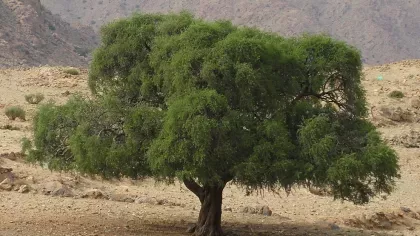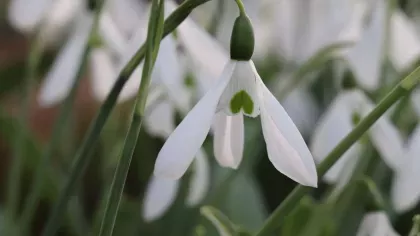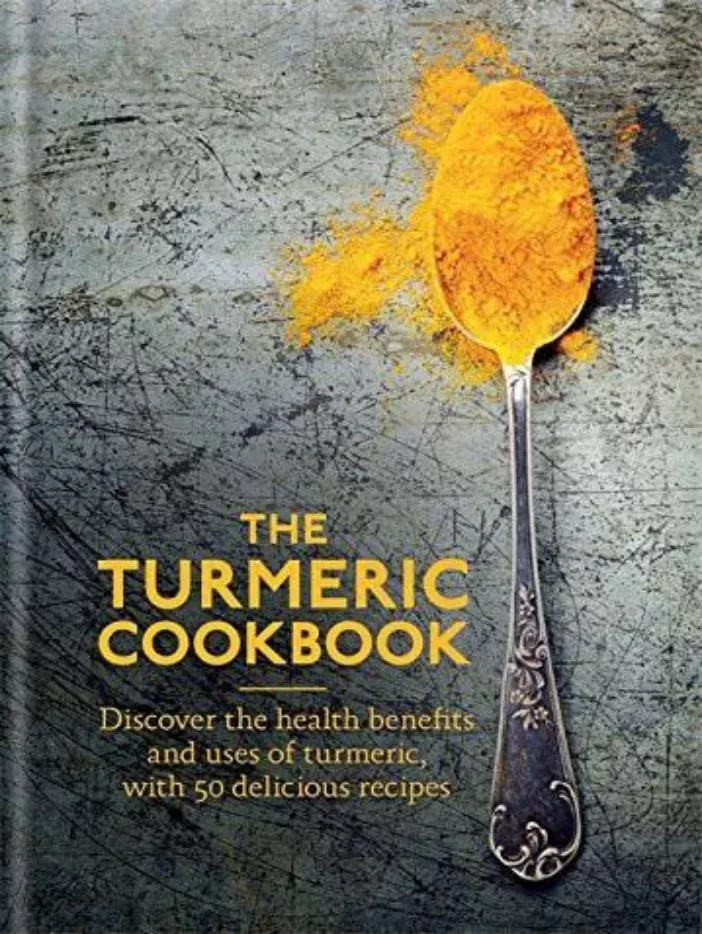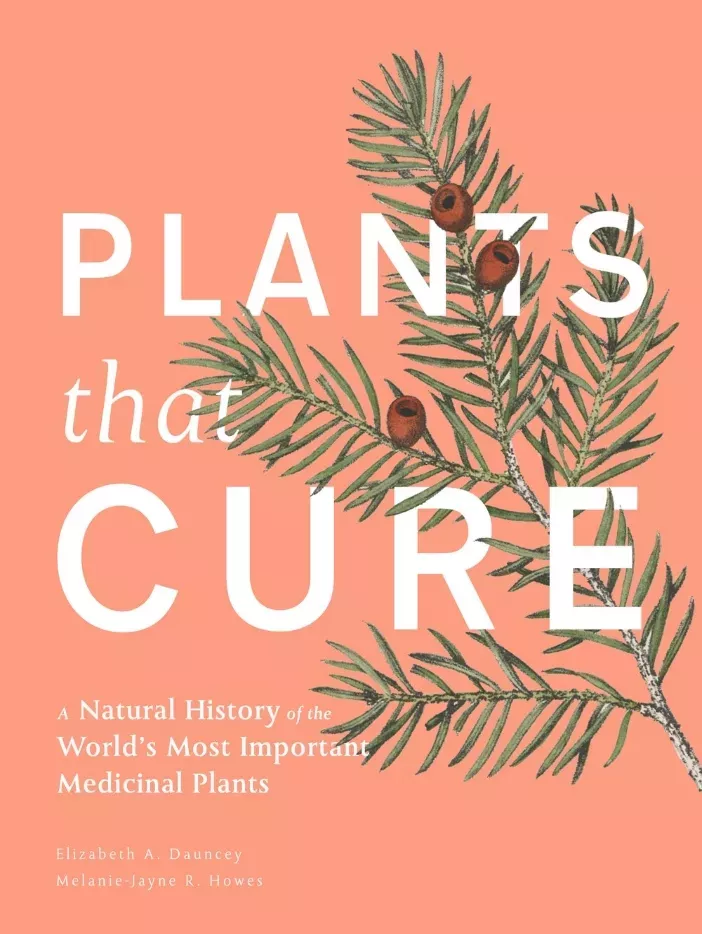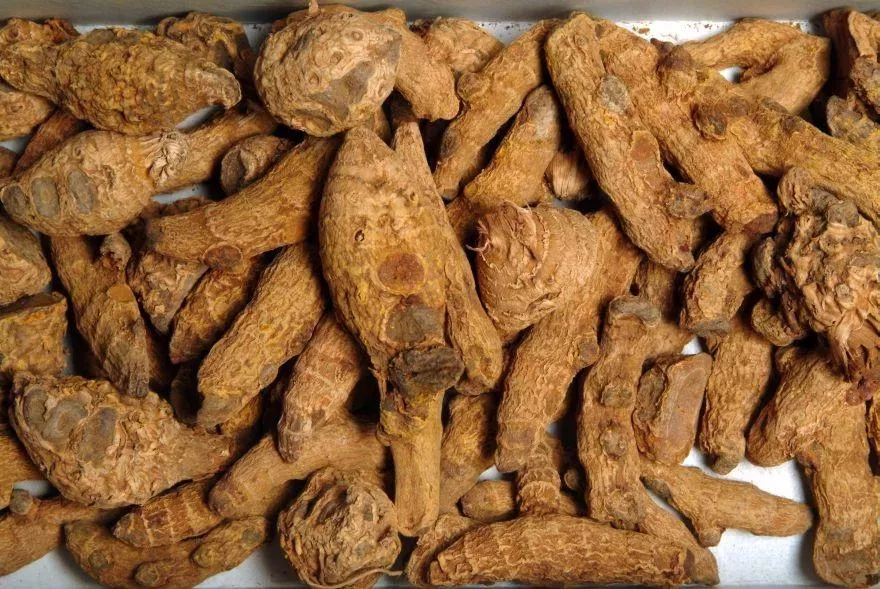
Turmeric
On this page
For thousands of years, turmeric has played a key role in many dishes, medicinal remedies, and cultural practices.
The bright yellow spice and dye comes from the underground stems (rhizomes) of the turmeric plant.
Not known to grow in the wild, turmeric is a domesticated plant that is widely cultivated throughout the tropics.
India is the world’s largest producer, consumer, and exporter of turmeric. People have been using turmeric there for at least 2,500 years.
Plant description
An upright herb with large, oblong leaves that are dark green on the upper surface and pale green underneath. Its yellow-white flowers grow on a spike-like stalk and have small, brown seeds. Turmeric only reproduces via its underground stem (rhizome) which is thick and ringed with the bases of old leaves.
Read the scientific profile on turmeric
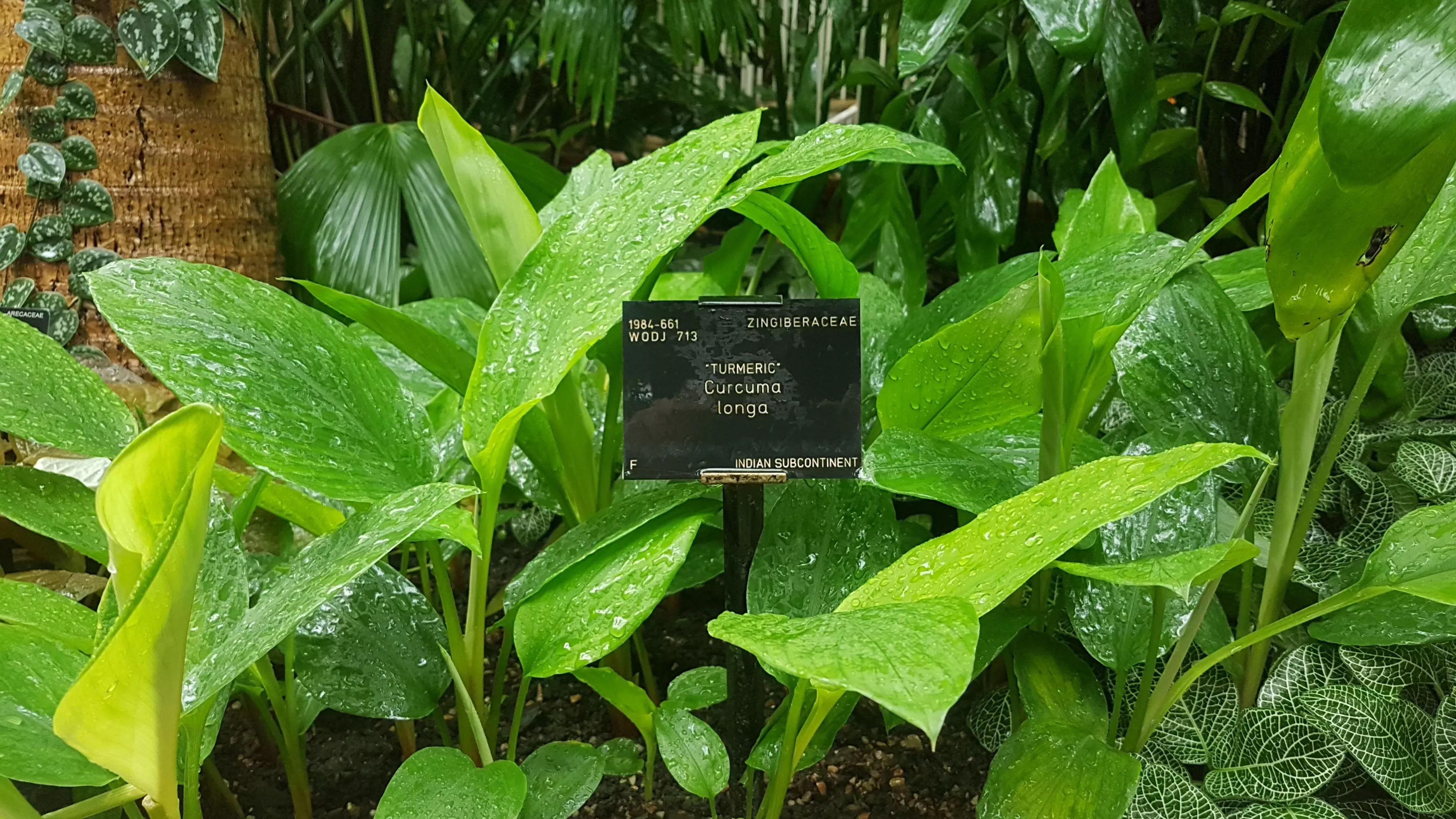
Plant uses
Beauty and cosmetics
Turmeric extracts have been used to dye creams. Traditionally, women would rub turmeric into their cheeks to produce a golden glow.
In India, people sometimes add an infusion of rhizome pieces to their bath water which is thought to improve skin tone.
Cultural
The bright, orange-yellow rhizomes of turmeric have auspicious connotations in India. They are often hung in kitchens and are sometimes tied to pots for good luck.
In Hinduism, turmeric is associated with fertility, prosperity, and good luck and so it often features in weddings and other special occasions.
Yellow and orange are both special colours in Hinduism and so turmeric dye is very popular during the Hindu festival Holi, which people celebrate by covering themselves with bright dyes.
Food and drink
Turmeric powder has a warm, bitter flavour like black pepper and an earthy, mustard-like aroma.
It is the main ingredient of curry powder and an important yellow food dye that is added to a lot of Indian foods, including curries, pickles, and rice.
In Europe and the USA, it is also widely used as a colouring agent in processed foods, sauces, and confectionery.
Health
Turmeric has been shown to have anti-cancer, anti-bacterial, anti-fungal, antioxidant and anti-inflammatory properties.
There has been much interest in the use of turmeric for conditions such as irritable bowel syndrome, rheumatoid arthritis, and Alzheimer's disease. Some studies suggest it may have cholesterol lowering effects and it is considered to improve liver function.
The essential oil from turmeric has been reported to have some insect repellent properties.
In traditional Chinese and Indian medicine, turmeric has long been used as an anti-inflammatory and to aid digestion. It has also been used as an antiseptic and general tonic and applied externally to wounds and insect bites.
In Ayurvedic medicine, turmeric has been used to counteract ageing processes. In Unani medicine, it has been used for conditions such as liver disorders and dysentery and has been applied externally for ulcers and inflammation.
In India, Pakistan and Bangladesh, some traditional medicines reputed to alleviate asthma and coughs have been prepared from turmeric rhizomes.
Materials and fuels
The bright yellow dye from turmeric rhizomes is used to colour not only food, but also textiles and paints.
As turmeric goes dark red in the presence of alkaline solutions, such as baking powder, strips of paper soaked in turmeric have been used in laboratories as pH indicators.
Did you know?
To cultivate turmeric, small rhizomes or rhizome pieces are planted on flat soil or in furrows with manure. After 7 to 10 months, the lower leaves turn yellow and the rhizomes are dug up. Their leafy tops and roots are removed. The rhizomes are then washed and either replanted or processed into spices or dyes.
To prepare the spice, turmeric rhizomes are boiled, dried, peeled and then ground to a powder. For the bright yellow dye, dried or fresh rhizomes are ground to a paste with water.
The colour of turmeric changes depending on the pH of the liquid it is mixed with. If it is an alkali solution, turmeric will turn red, but if it is an acid solution, the colour will change to yellow.
In India, the deliberate contamination and bulking out of turmeric is a serious problem in local markets. It is not uncommon to find lead chromate, yellow earth, sand, or talcum powder in turmeric powder.
Turmeric belongs to the same genus (Curcuma) as many other economically important species, including mango ginger (C. amada), narrow-leaved turmeric (C. angustifolia), and wild turmeric (C. aromatica).
Where in the world?
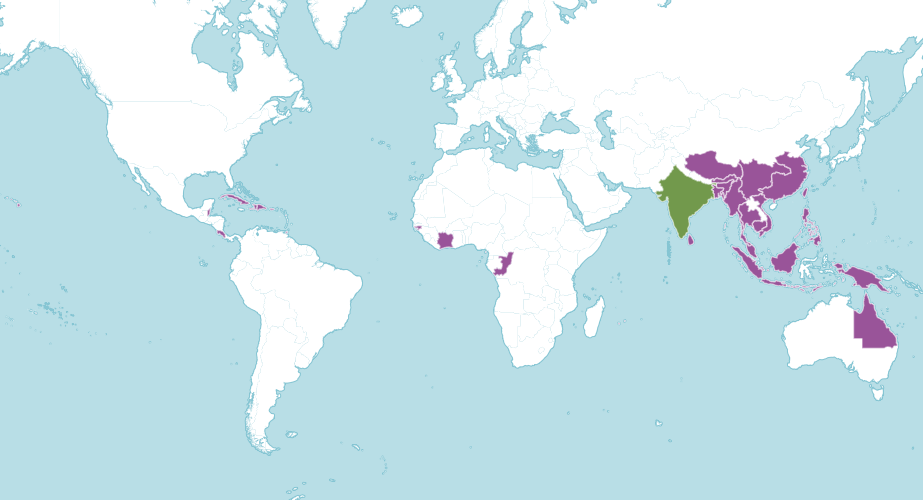
Not found in the wild; turmeric is only known as a cultivated plant that grows indoors or in heated greenhouses in temperate regions at a minimum temperature of 18°C.
Find it in our gardens
Kew Gardens
A botanic garden in southwest London with the world’s most diverse living plant collection.
